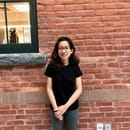It’s crazy how time can change your perspective on something. During elementary school, I struggled to stay awake whenever the English teacher would make the class sit quietly and follow along to the required reading as the audiobook monotonously regurgitated word for word what was printed on the page. Looking back on it now, those silent hours filled with the static from bad audio and the occasional whispers of turning pages were probably the reason I detested reading as a kid.
Though my love for reading eventually did return and grow, it took a lot longer for me to appreciate audiobooks and their ability to make reading accessible to a larger audience. In today’s modern, fast-paced world, people are constantly on the move with little-to-no leisure time. Thankfully, advancements in technology have made it possible for individuals to enjoy the things they love. Over the past few years, audiobooks have experienced a large resurgence among the public. While some users might be listening to audiobooks for the first time today, they actually have been around much longer than most people might guess.
According to this article, the first audiobook was recorded by Thomas Edison in 1877. Back then, he most likely used a phonograph, which is a far cry from the advanced recording technology used to produce audiobooks today, but everything has to start somewhere. From there, the Library of Congress and the American Foundation for the Blind developed a program for talking books. Audiobooks were distributed as reading material for wounded war veterans and those with visual disabilities. This marked the beginning of audiobooks gaining their reputation as a medium for reading accessibility. Later on, other countries would adapt a similar model to make literature more accessible to all citizens.
While physical books will always have their place in the hearts of bookworms everywhere, they can undeniably become heavy to carry around. There is also the component of functionality to consider. In a crowded space such as a train or bus, it’s near impossible to read without being distracted. Audiobooks solve both issues and more, because users are able to easily adjust the volume and speed of the story. As far as portability is concerned, audiobooks are stored on electronic devices such as a cellphone, so users don’t have to worry about another item taking up space and adding weight to their bags. Audiobooks also allow users to navigate to different chapters of the book without any difficulty.

As audiobooks began to grow in popularity, more companies, organizations, schools, and libraries started to expand their audiobook collection. Companies such as Audible, Scribd, and Libro.fm offer users access to audiobooks with monthly subscriptions at varying prices while most public libraries allow patrons to access free audiobooks through library connected apps, such as Libby, Hoopla, and OverDrive.
Not only do audiobooks help authors promote their stories to a wider audience, but it also promotes reading in young children. Getting a young child to sit still for one minute can be a difficult task, so the task of having a group of kids sit and read might as well be considered possible. However, audiobook narration has come a long way, and now most audiobooks have a wide cast of voice narrators in addition to including sound affects too.
In today’s world, things happen and end in the blink of an eye. As a result, there is an influx of information out there that either might not be accessible to everyone or not everyone has the time to read. While audiobooks aren’t the perfect solution for those who have trouble accessing or reading physical books, they are a step in the direction in providing and improving literacy for everyone.
Source: 1



